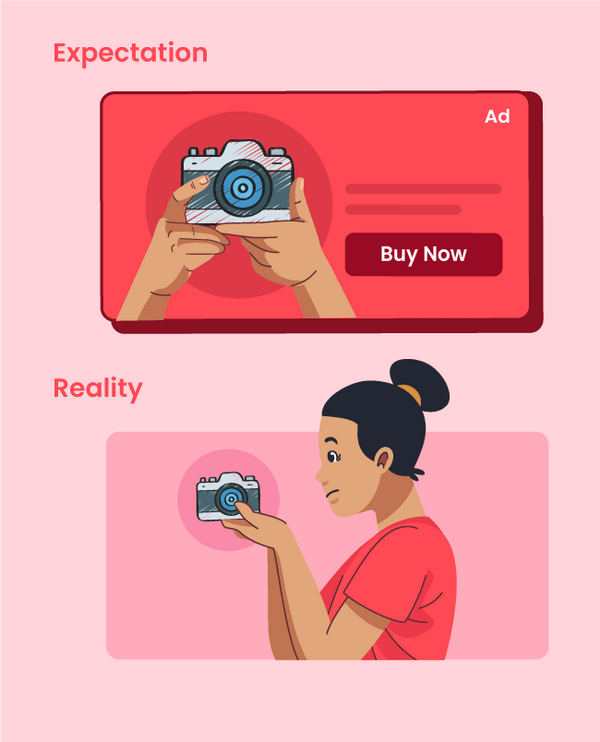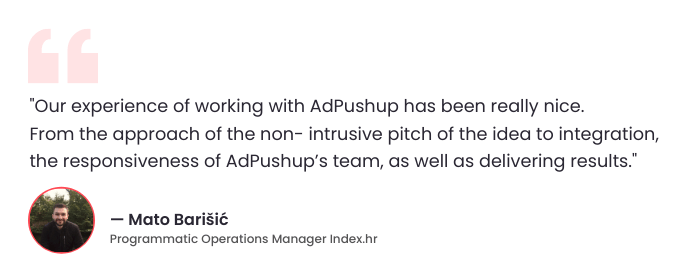Learn about misleading advertising examples and discover practical tips to avoid falling victim to deceptive marketing practices. Protect yourself from financial losses and make informed purchasing decisions. Read more.
In today’s fast-paced and competitive marketplace, consumers are bombarded with many advertisements vying for attention. While advertising is a powerful tool for businesses to promote their products or services, there is an inherent risk of encountering misleading advertising.
Statista estimates have revealed a startling trend in digital advertising, predicting a significant and exponential rise in costs associated with advertising fraud. Within five years, from 2023 to 2028, these costs are expected to surge from 88 billion to 172 billion U.S. dollars.
This article will look at some common examples of misleading advertising and provide practical tips to help consumers navigate this complex landscape with confidence and awareness. By empowering consumers with such a fallacy in advertising, we aim to promote a marketplace that prioritizes transparency, honesty, and consumer protection.
Before getting into the misleading advertising examples, let’s understand misleading advertising meaning.
What is Misleading Advertising?
False or misleading advertising represents digital or traditional propaganda that uses fraudulent or deceptive information to make consumers act differently than they would have otherwise. In other words, false advertising is propaganda that compels a consumer to purchase based on incorrect or deceptive information.
For instance, advertising could be misleading if it omits vital information about a product or service. The above applies to various advertising and promotional mediums like magazines, catalogs, physical and digital advertisements, websites, etc.
What are the Types of Deceptive Advertising?
The most reliable way for consumers to protect themselves from false advertising is to learn to recognize and ignore it. Here are some instances that fall under the definition of false advertising:

- False representation or making unsubstantiated claims about the product in the ad
- Including extra fees or hidden fees not included in the advertisement
- Inflating prices so that the product could be advertised as being on sale
- Advertising the product as eco-friendly when the products are not produced under sustainability guidelines
- Misrepresenting business by showing false associations with high-profile organizations
- Using fillers to increase product’s weight
- Falsely claiming that the products are Made in USA
- Misusing the word “free”
Let’s get to the examples of misleading advertising.
Misleading Advertising Examples
It’s the start of 2025, and we already have two significant examples of deceptive advertising: Apple and Google.
Apple’s voice assistant Siri was found to eavesdrop on users’ conversations, which were then shared with third-party advertisers. This, in turn, violated user privacy and led to a lawsuit settlement of $95 million. On the other hand, a lawsuit has been filed under California law against Google for collecting data on users who had opted out. In fact, the trial is set to begin in August 2025.
Now, let’s look at some more prime examples of deceptive advertising cases that shook the advertising industry.

Dieselgate Scandal (2015)
The second brand in our list of misleading advertising examples is Volkswagen. The German automobile giant, which has well-known brands like Ducati, Lamborghini, Bentley, and Audi, has been in serious trouble with its engine emissions. The brand is still recovering from this bolt.
Claim: Volkswagen launched several car models, claiming they run on clean diesel. The company had spent years campaigning for clean diesel as an alternative to electric and hybrid vehicles.
Reality: Upon receiving tipoff from researchers in 2014, the Environmental Protection Agency discovered “defeat devices” installed by Volkswagen in some half a million US 10.5 million vehicles worldwide. The brand used these devices to cheat the emission tests by altering the vehicular emissions in the test facility. The company finally agreed to a $14.7 billion settlement.
Activia Yogurt & DanActive dairy drink (2010)
The Dannon Company, the Activia yogurt and DanActive dairy drink manufacturer, was imposed with a deceptive advertising case by the Federal Trade Commission. The case was on the company’s exaggerated claims for yogurt and dairy drinks.
Claim: The Dannon Company claimed in its nation-wide advertisements that a daily serving of Activia soothes transitory irregularities and aids in “slow intestinal transit time,” and DanActive helps prevent colds and flu. Dannon also claimed that these claims were supported by scientific evidence in print, online, and television advertisements and on product packaging.
Reality: Upon fact-checking, it was found that there was no substantiated evidence to back the towering claims made by the company. The FTC reiterated a consumer’s right to access accurate information about a product. Dannon had agreed to pay the states $21 million for settlement.
Red Bull’s “Gives You Wings” (2014)
Next, we have Red Bull in our list of false advertising examples. The company came under scanner when a class action was filed against it for exaggerated energy benefits.
Claim: In its advertising campaigns, Red Bull claimed that the beverage can improve concentration and reaction speed. The company employed terms like “wings” and “boost” to suggest to customers that the drink provides a physical enhancement or uplift.
Reality: The class action lawsuit stated that Red Bull’s marketing was fraudulent and deceptive. It also highlighted the absence of genuine evidence to back Red Bull’s claim of providing more energy than a cup of coffee and even charging a premium. Red Bull settled the case by paying $6.5 million to the plaintiffs.
Tropicana Orange Juice (2011)
Tropicana is added to our list of deceptive advertising examples. The beverage manufacturer faced a class-action lawsuit for advertising its juices as 100% natural. The case was filed at a District Court in New Jersey under Lynch vs Tropicana Products.
Claim: Based on the consumers’ inclination towards natural products, Tropicana marketed its Orange juice as “100% pure and natural”. The company also used visuals to reinforce the message. However, the juice, in reality, was anything but natural.
Reality: The lawsuit claimed that it was not possible for fresh orange juice to have a long shelf life, in contrast to Tropicana’s two months shelf life. It would undergo industrial processing to make the juice stable – stripping it of all its natural flavor and aroma.
Airborne Cures Colds (2008)
Florida-based Airborne Health, Inc., maker of the popular Airborne Effervescent Health Formula, an effervescent tablet marketed as a cold prevention and treatment remedy, had to pay up to $30 million to settle charges by FTC. But why?
Claim: Airborne had advertised its Airborne Effervescent Health Formula as an effective cold remedy. And that it also had germ-fighting abilities. However, the truth was far from it.
Reality: There was no credible evidence to back the company’s claim that its products reduce the severity or duration of colds or provide any tangible benefit for people exposed to germs in crowded places. Hence, the Federal Trade Commission charged the firm for its deceptive advertising, claiming it could pose a health risk to consumers.
L’Oréal Anti-Wrinkle Products (2014)
The next brand in our list of false advertisement examples is L’Oréal. The French beauty brand landed in troubled waters with its false advertising related to skincare products.
Claim: L’Oréal claimed in its multiple ad campaigns that Lancôme Génifique and L’Oréal Paris Youth Code skincare products were clinically proven to boost youth proteins by stimulating the user’s specific genes. They also charged a premium for each product and justified the price by claiming the product acts five times faster on aging stressors like fatigue.
Reality: The FTC charged L’Oréal USA for misleading advertising. L’Oréal presented no credible evidence to validate its gene-boosting abilities or gene science. Under the administrative agreement, L’Oréal has been banned from making these claims about their products unless a competent company has substantiated them independently.
Johnson & Johnson Baby Powder (2018)
Our list of misleading advertisement examples would be incomplete without mentioning Johnson & Johnson. Their baby powder scandal had sent ripples across the advertising industry. Moreover, this is one of the major misleading advertising examples that still affects many people around the globe.
Claim: For years, J&J claimed that their baby talcum power is safe for everyday use by children or adults. Moreover, their marketing strategies also made it a household name. However, all this changed with one lawsuit.
Reality: Upon investigation, it was found that J&J talcum power contained asbestos, a carcinogenic material used in commercial products. Twenty-two women had claimed that they developed Ovarian cancer because of the continual use of their talcum powder.
An independent investigation by Reuters proved that the company had known about asbestos’s presence in their talcum powder since the mid-90s but hadn’t reported it to the FDA. As a result, the jury awarded a $4.69 billion payout, which was later reduced to $2.12 billion. At present, Johnson & Johnson is still facing trials in various states.
Kellogg’s Frosted Mini-Wheats (2009)
The last brand in our list of manipulative advertising examples is Kellogg’s, one of the most popular breakfast cereal brands worldwide.
Claim: The cereal brand had touted in its advertising campaigns that its Frosted Mini-Wheats is clinically shown to increase children’s attentiveness by 20%, especially compared to children without breakfast.
Reality: The FTA found that it was a clear case of fact misrepresentation. This was so because the company deliberately misled the public by marketing half-baked claims. The jury awarded a $4 million settlement in a deceptive marketing case.
As we are done with the examples of misleading advertising, let’s understand how we can identify them.
How to Avoid Misleading Advertisements?
Ads are designed to make you buy something, and they often won’t fret about misrepresenting what they’re promoting. That is why you should never take them at their face value and be mindful not to fall prey to one of many advertising fallacies. Always think before you act.
Here are some steps you can take to avoid misleading advertising.
How to spot Misleading or False Advertising?
The purpose of deceptive advertising is to deceive customers into purchasing their subpar goods. However, there are ways you can identify misleading advertisements and refine your purchasing decisions, such as:
- The product is probably being misrepresented if the pictures and descriptions do not correspond to the actual item you received
- Given the nature of the product, the price seems too good to be true
- The company is likely concealing anything if they don’t answer questions concerning their goods
- A product only has glowing positive reviews; no negative reviews are there
- Verify whether the company is recognized or properly registered with government organizations
Stating Newton’s third law of motion – Every action has an equal and opposite reaction. Similarly, false advertising has its consequences, sometimes dire. Let’s have a look at them.
The Consequences of Misleading Advertising
An advertiser should remember that there is a fine line between creative liberty and false advertising. Crossing that line could incur you hefty fines and lawsuits, such as:
- Lawsuits which can lead to settlements in millions or even billions in some cases, or product recalls
- Loss in revenue due to tanking sales
- Losing brand integrity and reputation in the eyes of consumers
- Direct impact on consumers’ health
How to Avoid Misleading Advertisements?
Ads are designed to make you buy something, and they often won’t fret about misrepresenting what they’re promoting. That is why you should never take them at their face value and be mindful not to fall prey to one of many advertising fallacies. Always think before you act.
As a consumer, you can take the following steps to avoid being duped by misleading advertising:
- Check the legitimacy of the company. If they claim to be associated with a certain organization, go to the organization’s website and cross-check before believing the ads
- Ads are meant to appeal to the consumer’s emotions. Hence, don’t take them on their face value, rather be skeptical of the claims the company is making
- Read the fine print on the product to get all the information about it
- Update yourself with the latest consumer laws in your state
- Cross-check the prices and claims made by the company in the ads
Here are some steps advertisers can take to avoid misleading advertising.
- Avoid using exaggerated or puffed-up claims and ambiguous language so as to not mislead the public
- Keep yourself abreast with your industry’s latest regulations (every country where your business operates)
- Set clear guidelines on misleading advertising when partnering with influencers or having sponsorships
- Verify your products’ claims through multiple checkpoints before advertising it
Misleading Advertising Examples: Conclusion
By understanding the fine print, conducting thorough research, seeking reliable sources and reviews, and being cautious of persuasive techniques, we can empower ourselves to make informed decisions. Developing a healthy skepticism and critically evaluating the claims and endorsements presented to us is essential. By doing so, we can safeguard our interests, save our hard-earned money, and ensure that our choices align with our actual needs and preferences.
Remember, as consumers, we can demand advertisers’ transparency, honesty, and accountability.
Grow your ad revenue by up to 40% with a Google Certified Publishing Partner. Sign up here for a free website monetization consulting.
Frequently Asked Questions on Misleading Advertising Examples
A quick example of misleading advertising is a toothpaste claiming to whiten teeth by several shades after just one use, when in reality, it may only provide minimal whitening effects over a more extended period of use.
An example of misleading sales is when a store advertises a limited-time discount on a product but fails to disclose that the original price was artificially inflated, making the discount seem more significant than it is. This can mislead consumers into thinking they are getting a better deal than they are.
The Dieselgate or the Volkswagen “Clean Diesel” lawsuit is a famous example of false advertising. Another misleading advertising example is McDonald’s where it was accused of falsifying the size of its patties and hamburgers in their advertisements.
The movie “Yesterday” was sued for false advertising by two movie enthusiasts. The blokes had rented the movie on Amazon Prime after seeing Ana de Armas in the trailer. However, they later found out that her part was cut in the movie’s final edit.
The three examples of product misinterpretation by brands include:
– Sensa marketed its powdered additive as a weight-loss product with no evidence to back-up the claim.
– Coca-Cola made misleading claims that its “Vitamin water” could lower the risk of eye damage, support healthy joints, and provide other health advantages. –
– Sony marketed the PlayStation Vita as “game changing,” promising capabilities like remote play and cross-platform compatibility, but it was later found out that it was limited to certain games.








